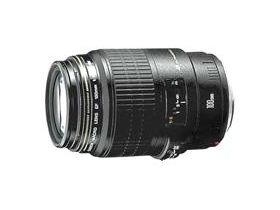Canon initiated the EF lens line in March 1987 as part of the innovative EOS system with the underlying development concept of fusing automatic and manual operation. Heralding a new era in SLR photography, the EF lenses with built-in focusing motors were the first to communicate completely electronically with the camera body. Followed by the high optical performance L-series, incorporating the silent Ultrasonic Motor (USM) and at a later stage the world's first interchangeable SLR lens with an image stabilizer, the EF lens series today is the largest line-up in the autofocus SLR world. This telephoto macro lens is capable of focusing to life-size (1X) without attachments. Although it replaces the EF 100mm f/2.8 MACRO lens marketed in 1991, it is a completely new design. It incorporates a ring type USM giving quiet, high-speed autofocus. The full-time mechanical manual focus gives very smooth manual focusing. For the first time in a 1X focusing telephoto macro lens, inner focusing is used. The lens length remains constant and a long working distance of 149mm makes worrying about getting too close to the subject unnecessary. Also, during focusing the front ring does not rotate making use of front-mounting accessories like macro ring lites simple and effective. "Three-group floating" focusing construction uses three independently moving groups, which holds focusing-related changes of aberrations to a minimum giving excellent image quality all the way from infinity to life size.
Diagonal angle of view (max):
24°
Focal length range (f-f):
100
Lens structure (elements/groups):
8/12
Thread diameter:
7.5 cm
Other features
Magnification:
0.14x
Weight & dimensions
Filter size:
5.8 cm
Weight:
600 g

